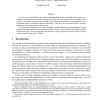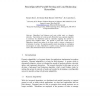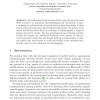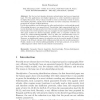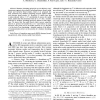163 search results - page 22 / 33 » Computationally Convincing Proofs of Knowledge |
FOCS
2000
IEEE
14 years 1 days ago
2000
IEEE
A zap is a two-round, public coin witness-indistinguishable protocol in which the first round, consisting of a message from the verifier to the prover, can be fixed “once and...
IPPS
1999
IEEE
13 years 12 months ago
1999
IEEE
HeteroSort load balances and sorts within static or dynamic networks. Upon failure of a node or path, HeteroSort uses a genetic algorithm to minimize the distribution path by optim...
HUC
2007
Springer
13 years 11 months ago
2007
Springer
Securing interactions between devices that do not know each other a priori is an important and challenging task. We present Amigo, a technique to authenticate co-located devices us...
PKC
2000
Springer
13 years 11 months ago
2000
Springer
For the two last decades, electronic authentication has been an important topic. The first applications were digital signatures to mimic handwritten signatures for digital document...
Publication
Distance bounding protocols are an effective countermeasure against relay attacks including distance fraud, mafia fraud and terrorist fraud attacks. Reid et al. proposed the first ...
